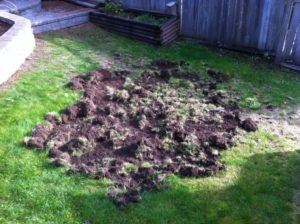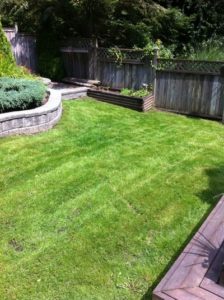One question I have been getting lots at work lately is about the European chafer beetle. Our local landscapes have been hit hard by the worst cold in thirty years. Trees have been snapping, hedges are bent out of shape, sidewalks are icy, and desperate landscapers like me raid local work wear shops in search of good gloves.
So what about those nasty beetles that invade our lawns and feed on grass roots? Don’t they all die from the cold? They are, after all, close to the surface because they feed on grass roots. I was wondering about this myself. I admit, I wasn’t sure if the cold would crush the European chafer beetle population. If I had to guess, I would say there must be some mortality.
Then Global News came to the rescue with a story on that very topic! Great. The January 11, 2017 story features Dr. Allan Carroll, a professor of insect ecology at UBC.
Professor Carroll believes that the European chafer beetle is quick to adapt to cold events. It is believed that the beetle burrows deeper into soils to avoid the cold.
The harshest Lower Mainland cold snap in thirty years is likely to kill off some of the juvenile beetles. It is likely that we will see less lawn damage in the short-term. But Dr. Carroll thinks this will be temporary. The beetle will make a comeback.


The story ends by mentioning that many people have tried nematode applications. I applied nematodes last summer at a residential site for a client who loves his lawn. Many believe nematodes don’t work but research suggests otherwise. See suggested reading at the end of this post.
On my last visit in fall, the client’s lawns were clean. Zero damage. The cold snap will help. I will see what the lawns look like in spring. This is a huge test. If the nematodes work then the case will be closed. Read my blog post about it.
The obvious downside is that nematodes must be applied annually and they’re not cheap. But a nice lawn is worth it. If you need help with your nematode application next summer please visit my landscape website.
Suggested reading: “Resilient Gardens 2016” by Dr. Linda A. Gilkeson

